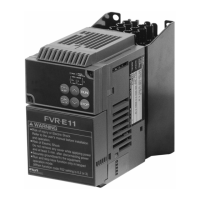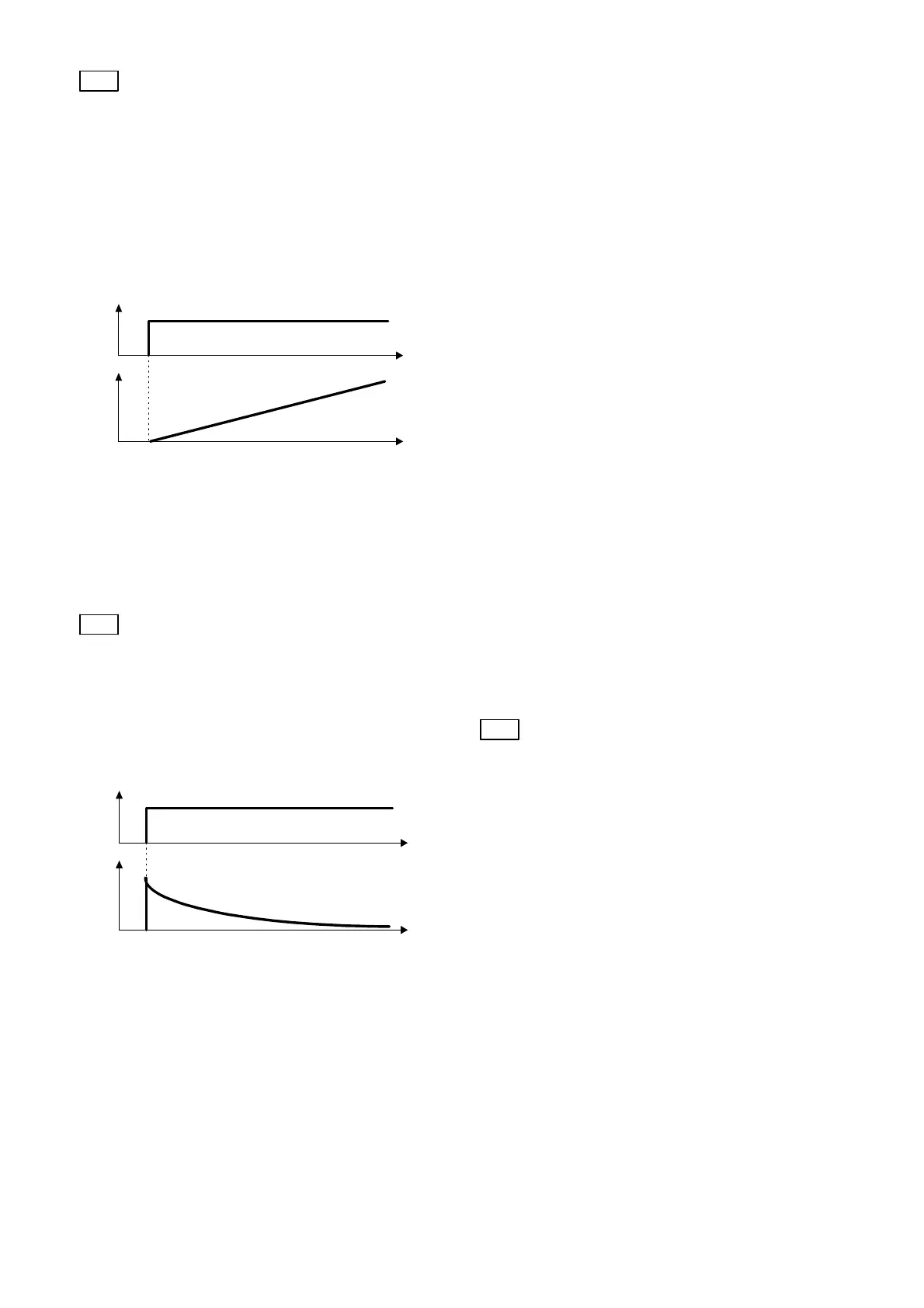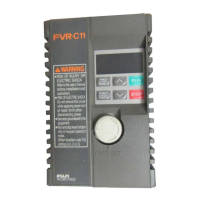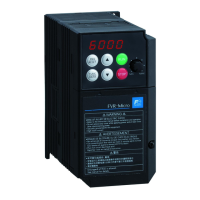5-36
H23
PID control (I (integral time))
I action
An operation where the speed of the change in
the amount of operation is proportional to the
deviation is called I action. Therefore the I
action outputs an operation amount obtained
from integration of the deviation. For this reason,
the I action is effective to converge the control
amount to the reference value. However,
response is slow to the deviation with abrupt
changes.
Time
Devia-
tion
Amount
of
opera-
tion
Setting range: 0.0 Inactive, 0.1 to 3600 s
To determine the effect of the I action,
I: integral time is used as a parameter. With a
long integral time, the response is slow and
reaction to an external force is small. With a
small integral time, the response is quick. When
the integral time is too small, there is hunting.
H24 PID control (D (Differential time))
D action
An operation where the amount of operation is
proportional to the differential value of the
deviation is called D action. Therefore, the D
action outputs an operation amount obtained
from the differentiation of the deviation and the
response to abrupt changes is quick.
Time
Devia-
tion
Amount
of
opera-
tion
Setting range: 0.00 Inactive, 0.01 to 10.0 s
D: differential time is used as a parameter to
determine the effect of the D action. With a long
differential time, decrease in the vibration
caused by the P action upon deviation is quick.
With too large a differential time, vibration may
become larger. With a small differential time,
decrease in the deviation becomes smaller.
PI control
Deviation remains with P action only. To
eliminate the remaining deviation, I action is
added and P + I control is generally adopted.
The PI control functions to always eliminate
deviation in spite of changes in the reference
value and stationary disturbances. However,
when the I action is strong, response to the
deviation with abrupt changes is slow.
P action only can be used for loads with an
integral factor.
PD control
Upon deviation, the PD control generates an
operation amount larger than that obtained by D
action only, to reduce the increase of the
deviation. When deviation is reduced to small,
the function of the P action is made smaller.
For a load including integral factors to be
controlled, the P action alone can cause hunting
in the response due to the action of the integral
factors. The PD control is used in such cases to
decrease hunting of the P action to stabilize.
That is, this control method is applied to loads
having no braking in the process itself.
◆PID control
The function of the I action to reduce the
deviation and the function of the D action to
suppress hunting are combined with the P
action. Accurate responses without deviation
are obtained.
This control method is effective to loads which
take time from generation of deviation to
development of a response.
H25 PID control (Feedback filter)
This function provides a filter for the feedback
signal input at control terminal 12 or C1. The
filter makes the operation of the PID control
system stable. However, an excessively large
setting causes a poor response.
Setting range: 0.0 to 60.0 s

